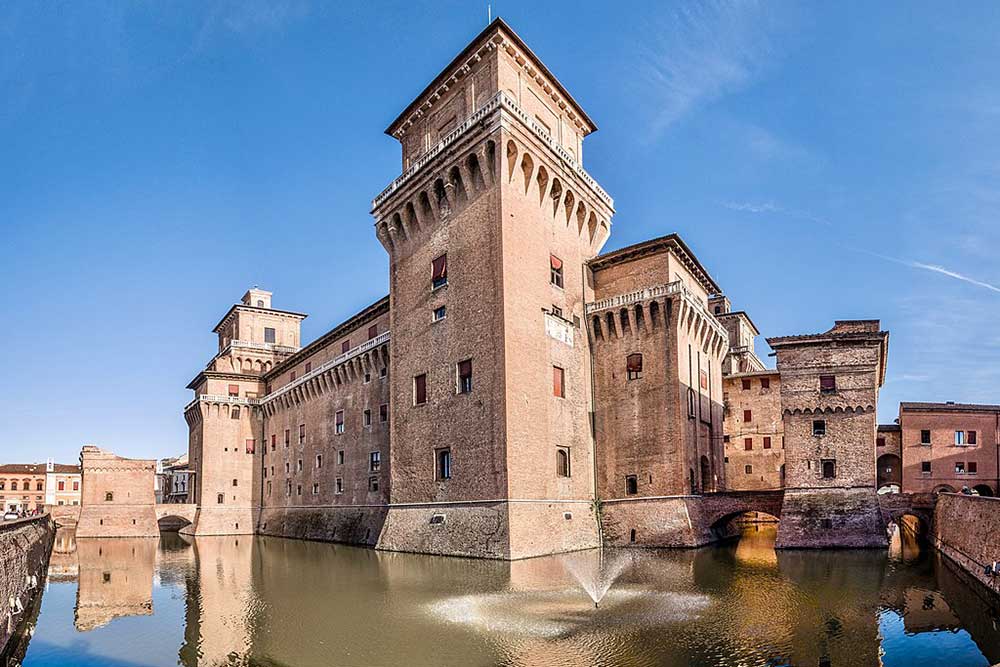
Ferrara, a city in the heart of Italy's Emilia-Romagna region, is a treasure trove of Renaissance art, culture, and history. With its well-preserved architecture, rich cultural heritage, and elegant atmosphere, Ferrara offers a unique glimpse into the splendor of one of Italy's most flourishing periods. Designated a UNESCO World Heritage site for its urban planning and historical significance, Ferrara is a must-visit destination for those who appreciate art, history, and Italian culture.
Ferrara’s rise to prominence began in the late Middle Ages under the rule of the powerful Este family, who governed the city from the 13th to the late 16th century. The Este dynasty transformed Ferrara into a center of intellectual, artistic, and political power during the Italian Renaissance, attracting some of the greatest minds of the time, including the poet Ludovico Ariosto and the painter Cosimo Tura.
Under the Este family, Ferrara became a model of Renaissance urban planning. The city's grid-like layout was revolutionary, blending medieval and Renaissance styles with precision and symmetry, a concept ahead of its time. Many of Ferrara’s grand palaces, churches, and squares were constructed during this era, cementing the city’s reputation as a Renaissance gem.
One of the most striking features of Ferrara is its stunning architecture, particularly the monumental Castello Estense. This 14th-century fortress, with its imposing towers, moat, and drawbridges, was once the residence of the Este family. Today, it houses a museum where visitors can explore the opulent rooms, artworks, and artifacts that tell the story of Ferrara's illustrious past. The castle’s panoramic terrace offers a magnificent view of the city’s historic center, allowing visitors to appreciate the layout of this Renaissance city.
Another notable landmark is the Cathedral of San Giorgio (St. George’s Cathedral), a masterpiece of Romanesque and Gothic architecture. The cathedral’s façade, with its intricate sculptures and arches, is a testament to Ferrara's artistic prowess. Inside, the grand frescoes and religious art reveal the city’s deep connection to its faith and the artistic innovations of the time.
Ferrara is also home to the Palazzo dei Diamanti, named for its unique diamond-shaped stones that cover the building’s exterior. This Renaissance palace houses the National Picture Gallery, showcasing works by prominent Italian artists such as Andrea Mantegna and Cosmè Tura, as well as temporary exhibitions featuring both historical and contemporary art.
In 1995, Ferrara was recognized as a UNESCO World Heritage site for its exceptional urban planning, which seamlessly combined medieval elements with Renaissance innovations. The recognition highlighted Ferrara’s role as a pioneering model of Renaissance city design. The expansion project known as the Addizione Erculea, initiated by Duke Ercole I d’Este in the late 15th century, doubled the size of the city and introduced straight, wide streets and grand public spaces, setting a precedent for modern urban planning.
The city’s walls, which stretch for 9 kilometers (about 5.6 miles) around the historic center, are among the best-preserved Renaissance fortifications in Italy. Today, these walls provide a peaceful green space for walking or cycling, offering a scenic view of both the city and the surrounding countryside.
Ferrara is renowned not only for its architectural beauty but also for its vibrant cultural life. During the Renaissance, the city was a hub of artistic and intellectual activity, with the Este court sponsoring poets, musicians, and artists. This cultural flourishing is still celebrated today in Ferrara’s numerous festivals, exhibitions, and performances.
One of the city’s most significant cultural events is the Ferrara Buskers Festival, held annually in late August. This international street music festival draws performers from around the world, transforming Ferrara’s streets into an open-air stage for musicians, dancers, and artists. The festival reflects Ferrara’s continued dedication to the arts and its welcoming spirit.
Ferrara is also famous for its literature, particularly the works of Ludovico Ariosto, whose epic poem Orlando Furioso was written while he was in the service of the Este family. Ariosto’s influence on Italian literature is commemorated in Ferrara, with monuments and events that celebrate his life and work.
No visit to Ferrara is complete without indulging in its rich culinary traditions. The local cuisine is deeply tied to the region’s agricultural heritage and the Este court’s influence. Some of Ferrara’s signature dishes include cappellacci di zucca—large pasta filled with sweet pumpkin, usually served with butter and sage—and salama da sugo, a rich pork sausage slow-cooked in red wine and spices.
Ferrara's bakeries are also renowned for producing ciupéta, a type of breadstick known for its distinctive twisted shape, and panpepato, a spicy, dense cake made with dried fruits, nuts, and cocoa. The region’s wines, particularly the sparkling white Pignoletto and the red Lambrusco, are perfect accompaniments to a meal, reflecting the rich agricultural bounty of Emilia-Romagna.
While Ferrara's history is a major draw, the city remains vibrant and lively in the present day. Its well-preserved historical center coexists with modern life, creating a dynamic mix of past and present. Ferrara is home to the University of Ferrara, one of the oldest universities in Italy, which adds to the city’s youthful energy and academic prestige.
Cycling is a popular mode of transport in Ferrara, earning it the nickname “the City of Bicycles.” The flat terrain and wide streets make it easy to explore the city by bike, allowing visitors to leisurely enjoy its beauty while discovering hidden corners and local cafes.
Ferrara is a city where history, culture, and modernity converge. Its Renaissance grandeur, architectural wonders, and vibrant cultural scene make it a captivating destination for travelers seeking a deeper connection to Italy’s artistic and historical legacy. Whether you are strolling through its quiet streets, exploring its grand palaces, or savoring its culinary delights, Ferrara offers an immersive experience that is both elegant and enriching.

More Details



